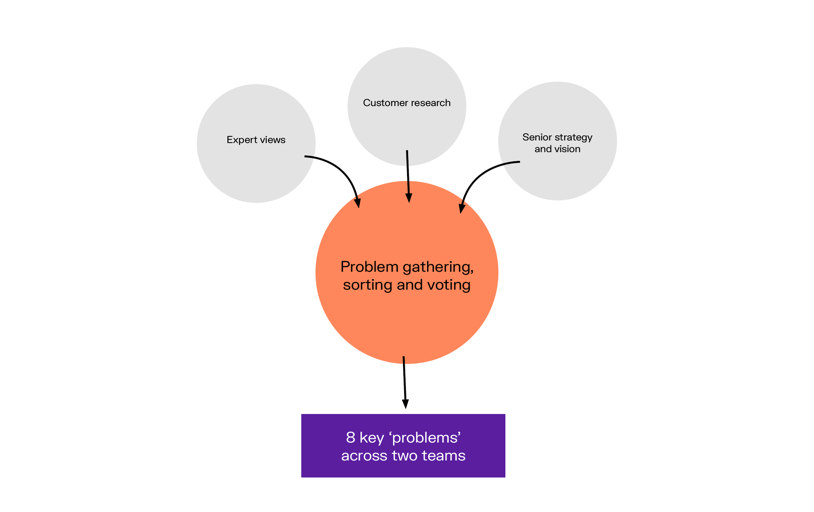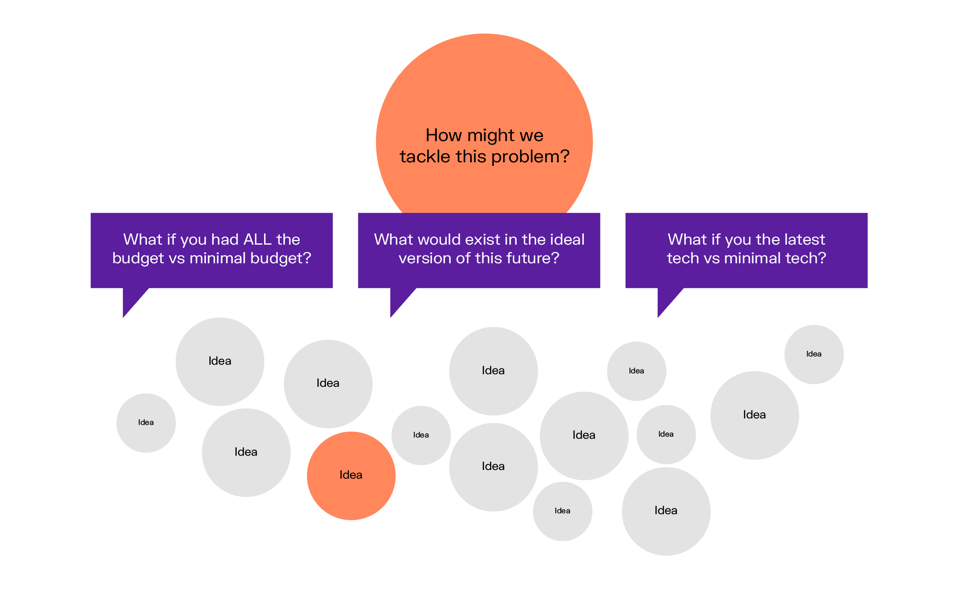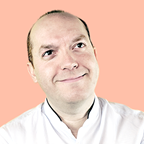Department for Education: A futures-led design sprint to shift organisational culture
We worked with the Department for Education (DfE) to explore their future departmental vision and create tangible outputs to help bring their vision to life.

The background
Having a mission and vision is standard practice for most organisations, demonstrating their future aspirations to their employees and the outside world. However, it can be challenging for some organisations to create the time and opportunity for senior stakeholders to explore that future space. Stepping outside of the daily work challenges and having the freedom to create new, unconstrained ideas is essential to make bold steps towards change across a large, complex organisation.
We’ve worked with the DfE as a key User Research and Design partner across more than 100 high-profile projects since 2019. They asked us to support their design leadership team to create a tangible vision of that future space.
What we did
We used Jake Knapp’s tried and tested Design Sprint model as a basis for this project. Over a five-day sprint, we supported participants to gather challenges from across their part of the organisation and ultimately turn them into opportunities for growth and change. This model allowed participants a dedicated, intensive period of focus away from their day-to-day roles.
Day 1 – Understanding the problem
On day one we gathered insights from teams and individuals across the department including: experts, senior leadership and user research. We sorted and prioritised these insights and voted on key problems to tackle during the sprint.

Day 2 – Developing ideas
The problems we defined on day one were divided up across the team so that small groups tackled a problem each, exploring possible solutions. The usual sprint approach here would be to do fast iterations on designs. However, because of the nature of the challenge, looking at long-term organisational change we had to take a different approach. We asked the teams to consider their problem from different angles, speculating on solutions based on unlimited budget and advanced technology compared to limited budget and no technology. This allowed the participants to push boundaries and develop ideas in multiple directions.

Day 3 – ‘Backcasting’ to create a roadmap
On day three each team presented their strongest ideas. We then asked them to create an ideal future state of the organisation with that idea in place. We then worked on creating a timeline using a ‘backcasting’ method: starting in the future and plotting backwards towards the present day to see what key events would need to happen along the way. This gave us a loose roadmap starting with small steps which could be taken today.
Day 4 – Creating speculative prototypes
To bring each idea to life so we could discuss, critique and test it with others, we supported the team to create speculative prototypes. These are not digital prototypes, intended to be built and used in the real world. Instead, they are artefacts that allow us to imagine an idea in a more tangible way and to help others understand our vision more quickly. Though some of the ideas were digital products such as apps or digital tools, some were less tangible, and we required more creative ways to demonstrate them. The teams found innovative ways of capturing their ideas from future event posters to fictional future interviews with service users describing their experiences.
Day 5 – Testing
For the last day of the sprint, we had prearranged time with colleagues from other parts of the organisation to show them the prototypes and get their initial reactions to the ideas. Their feedback was gathered and organised to highlight strengths and show areas for further thought or improvement.
Next steps
We left the teams with a set of robust ideas they could share with decision-makers. The aim of showing these tangible ideas was to build support for the future vision. The ideal outcome would be buy-in from leadership to allow time and resources to scope and develop some of these ideas in full. We agreed as a group that no one idea on its own would create the future vision that we wanted, but that they would work together to move the organisation forward.
What we achieved together
Nexer’s role was to create a structure that allowed us to move at pace and make the best use of the time we had with senior leaders in the business. For both us and the organisation this was an experiment. The outcomes were uncertain, but we were pleased to be given the challenge of facilitating the process. This new territory challenged us to adapt quickly based on the outcomes of each day to establish the activities for the following day. A clear structure with timed tasks allowed us to help the teams navigate this experimental work in a way that felt safe and structured.
The use of a design sprint process to explore the possibilities in terms of delivering upon our organisational mission helped enormously. It was an interesting approach to use this process for an internal challenge of this kind rather than that of customer facing issues. Having all of the right decision makers and experts together in a room was invaluable to be able to firstly question our initial mission but moving forwards to test and explore the possibilities of future solutions
The impact we made
Firstly, the team produced seven bold ideas to drive change in the organisation. It also gave them the tools to communicate the concepts to more senior stakeholders who could make time, space, and budget available for them to be taken further.
We also trialled a new method for generating ideas at an organisational level, and we did this at speed using a design sprint format that proved efficient, productive and fun.
From a personal perspective being able to work together in a safe and creative space to share ideas offered a rare chance to work side by side with colleagues from the wider organisation and really appreciate their skills and expertise. Seeing ideas rapidly move from conception to prototyping and storytelling within a matter of days really helped build excitement and a wider appetite to fulfil our organisational vision and missions.

Get in touch
Please email shaun.gomm@nexergroup.com if you would like to discuss our work, or call our Macclesfield office on +44 (0)1625 427718
